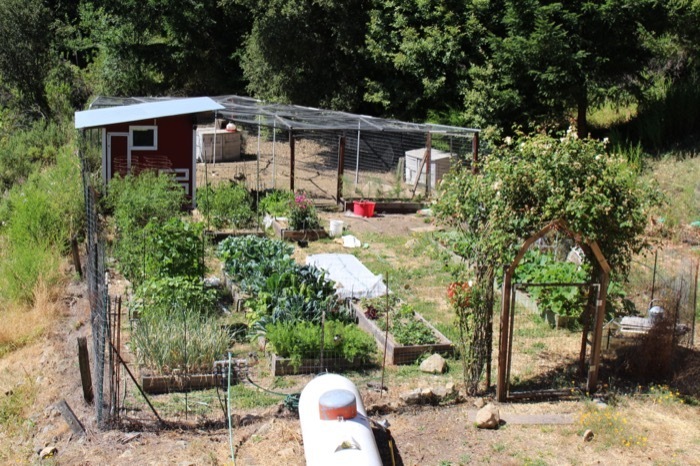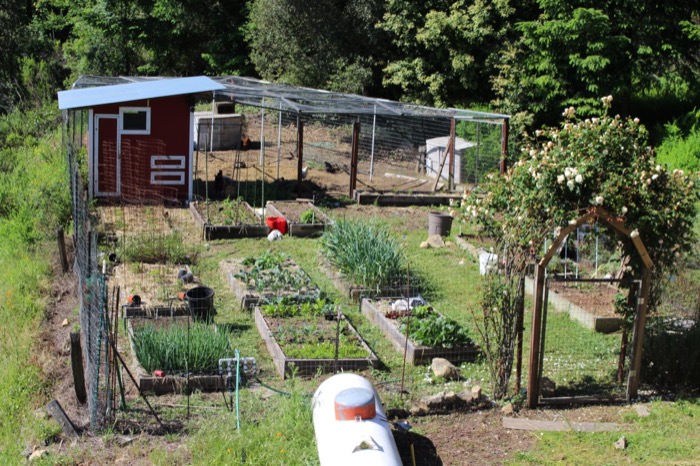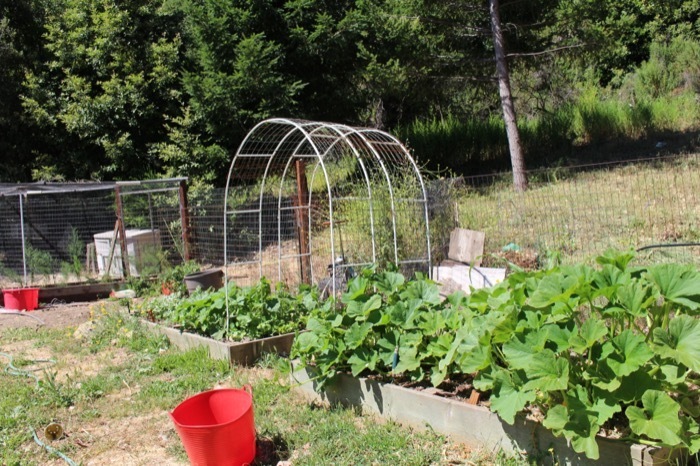19 Dec 2022
I was going to use the obvious phrase “the elephant in the room” for this title but then everyone would assume I was making a bad mastodon pun. This is not about mastodon. This is about cancer. The tiger is a better metaphor for the thing I’ve been pretending isn’t happening.
Hello, I have cancer. Throat cancer, specifically. It is not that bad as far as cancer goes and my doctors tell me that once I get through the chemo and radiation there is a very high chance I will be 100% cured. Not like “in remission” cured but actually cured cured. It’s good news! But the chemo and radiation for the next seven weeks are probably going to be tough. I start today.
I did not restart this blog to turn it into a cancer diary, because unless you actually have cancer, cancer diaries can be super boring. But I am going to talk about it, because I think stuff through and settle my mind by writing about it.
I was going to seperate the cancer posts from my normal blog posts but it looks like that will be complicated and I don’t have the spoons for that. The cancer posts after this one will have content warnings in the titles, you may skip if you wish. I do hope to continue writing about other more normal things, such as cats. Because you cannot not have cats, even in times of darkness.
Yeah, the timing of the pandemic AND the holidays AND twitter collapse AND restarting a blog AND getting cancer is a bit much. I wish things were all different and that it hadn’t happened right now. But as a wise man said in a book once, that’s not for us to decide. All we have to decide is what to do with the time that is given to us.
So far I’m trying my best.
10 Dec 2022
I was going to allow myself one and only one post about the tech details for this blog that interests no one but other nerdy bloggers. And then I wrote 1000 words about it before the voice in my head that was yelling “SHORT POSTS. YOU WERE GOING TO DO SHORT POSTS” made me feel so guilty I stopped. Here is the shorter attempt.
The before times
For years this blog was in self-hosted Wordpress, which I had found increasingly slow, complicated, and unwieldy. I’m sure there were lots of ways I could have made it faster, simpler, and uh, wieldy, if I had wanted to really work at it. But I got to the point where the maintenance felt like a chore and I wanted to try something else that was just simpler.
The middle times
I have had so many incomplete “get the blog into something simpler” attempts, including delusionally thinking I was going to write my own blog platform, and also a couple passes of delusionally thinking I knew enough CSS to do my own design by hand from scratch.
I started using Jekyll, the static site generator that powers github pages, during one of those attempts. At the time it was the most popular and best-supported SSG. It’s since become less popular (everyone loves Hugo now), but I didn’t want to start over over again with yet another language and framework and templating system and and and, so Jekyll it is.
After I realized my own CSS was not going to cut it I settled on the Lanyon theme. It has some minor changes (I’m capable enough at CSS to poke at an existing design) but I mostly used it as-is.
Sadly I never made far enough in any of these blog reboots to actually stop running Wordpress.
Today
Finally I made it far enough into a blog reboot to where I am no longer running Wordpress.
The site is still Jekyll, and still Lanyon. It is definitely much simpler and more comfortable for me to maintain and to understand.
I use git locally and push to github as a backup, but I don’t deploy anything out of github or have any kind of CI/CD system. I have an old-school web host that runs apache, and I just build the site and then copy the files to that host with scp like I am a caveman straight out of 1997.
07 Dec 2022
It is a truth universally acknowledged that a despairing twitter user in possession of a moribund blog must be in need of a blog reboot.
I have tried a bunch of times to restart this blog over the years, from writing more regularly, to design changes, to killing the whole thing altogether and starting over from scratch. All of these have been really hard things for me to get headway on, for various reasons. It did not help that twitter was right there, did not make me install any frameworks or learn new programming languages, and was really addictive. But, as you know, twitter. (deepest of sighs).
With the imminent-loss-of-twitter incentive I’ve gotten farther into the process this time. I’m trying really hard not to get mired in details and to just put something workable up. There’s still an awful lot of work left to do, but it’s up and there’s some text on it, which is a start.
My primary goal for the blog this time around is to not be so insanely perfectionist about it. One huge advantage of twitter for me was that everything about it (the character limits, the pacing) very neatly sidestepped my insane need to over-write and over-edit everything to death. So I’m hoping to spend less time on the Enormous Serious Thing It Took Me A Week to Write and more on just, well, short easy things that kind of look a lot like tweets. (Note: I’ve done four drafts of this post and it’s twice as long as it should be so maybe not succeeding so well yet.)
Also there will be lots of cat and garden and coffee photos, because of course there will.
07 Dec 2022
A new blog is forthcoming.
01 Aug 2017

I heard a story once a long time ago that over time all the cells in our body die off, and are replaced by new cells. The entire process, it is said, takes seven years.
I googled this fact this morning and it turns out to be totally a myth, up there with “we only use 10% of our brains” for dubious quasi-biological “facts.” But that’s the dubious quasi-biological fact I’m hanging my theme on here and I’m going to stick with it. Bear with me.
Greek legend tells of the story of Theseus’ ship, which was preserved for hundreds of years in port after the founding of Athens. When individual boards in the ship broke or rotted away, they were replaced, until finally none of the original ship remained.
There’s a similar old story of Grandfather’s axe you may have heard: grandfather’s axe has been handed down from father to son for generations. The handle has been replaced four times, the axe head twice.
The paradox for philosophers, then, is whether Theseus’s ship or Grandfather’s axe actually still exists. Is it still the same object if every component of it has been replaced with some other component?
If we turn over all the cells in our body every seven years, are we still the same person?
This paradox also makes me think me of Doctor Who (OK, seriously, bear with me), in which the titular character dies and regenerates on a regular basis, with each incarnation having all the memories of the original but a different appearance, personality, and outlook. (It’s an awfully convenient plot device for a long-running character whose actor must be replaced once in a while).
If we turn over all the cells in our body every seven years, are we all just Theseus’ ship, grandfather’s axe, slow versions of the Doctor: at our essential root the same person, but continually changing into new versions of ourselves?
I bring this up because today is my birthday. My fiftieth birthday. Fifty is a big number, a round number, a half a century, a significant birthday by any measure. I could grimace and grumble and whine about that. Or I could point out as I turn 50 I have completed seven cycles of seven years. Like the Doctor I am just beginning my eighth regeneration.
In past cycles I have been a redhead, a drummer, a geek, a writer, a goth, a drunk, a recluse, and a lunatic.
I am super curious to see where this season’s plotline goes.
(Header photo from grixti on flickr (original; CC BY-NC-ND 2.0)
29 Aug 2016


It’s late summer and the weather has been super hot so the garden is starting to look a little peaked. Everything is producing now, and nearly all of what I’m doing in the garden is just trying to keep up with the harvest. Right now the limiting factor is how many containers of cooked vegetables I can stuff into the refrigerator.
Bearing like crazy: tomatoes, peppers, summer squash, cucumbers, green beans, broccoli, carrots, beets, kale, chard, herbs.
Bearing soon: Cantaloupes, watermelons, leeks, cabbage.
Still growing: Sweet potatoes, winter squash & pumpkins, brussels sprouts.
Next week we’ll be on vacation, at home, mostly so we can catch up with stuff around the house. For me that means canning a lot of tomatoes, making pickles, and cooking and freezing peppers and kale. I do hope to have at least some time to sit around and do nothing at all.
Things I did last month:
- Mowed.
- Harvested the onions and set them out to cure.
- Harvested carrots, beets, cucumbers, green beans, peppers, and tomatoes, and tomatoes, and tomatoes.
- Planted dry-farm squash.
- Planted buckwheat for a cover crop in two beds, and cut it down.
- Sowed seeds for lettuce, broccoli, cabbage
- Planted more green beans, and lost the seedlings to birds.
- Cooking, eating, freezing, cooking
Things I need to do this month:
- Plant potatoes, maybe (unlikely).
- Plant lettuces, broccoli, cabbage.
- Plant more carrots and beets
- Plant the last green beans.
- Sow more lettuce seeds.
- Sow peas
- Sow spinach (if I can find room).
- Continue harvesting, cooking, eating, freezing, canning.
09 Aug 2016
I harvested all the garlic from the garden last month, but too much life happened between then and now to be able to write about it. But after all the posts I’ve made about garlic this year (Garlic Prep, Garlic Planting, Garlic Scapes), I figure I should finish up the series.
Pulling the Garlic
When last I posted about the garlic in early June, I had stopped watering, the green garlic tops were looking dry,and I predicted I only had a couple more weeks to go before it was time to harvest. That was spot on: I pulled up the whole batch in the last week of June.

On the Subject of Rot
In that last post I was worried about rot:
I’ve had a lot of trouble the last few years with garlic bottom rot; the plant will grow just fine and then wilt and die and when you pull it up it’s all mushy and gross on the bottom end. Best as I can tell from The Google this is because of a fungus in the soil that is extremely difficult to get rid of.
I did have some garlic that succumbed to the rot this year. Here’s a particularly horrific example that went directly into the trash. I think this is what zombie garlic looks like.

Most of the garlic I pulled did not have much rot at all. I only had to toss about 10 heads from the 100-odd cloves I planted and 10% is so much better than the losses I’ve had in the past. Unfortunately I don’t know if I did better this year because of the anti-fungal prep I did to the cloves when I planted, because I’m using better seed garlic, or because I kept a better eye on the watering. Or no reason at all: just better luck. But I’m still happy, especially because much of the garlic I harvested looks like this:

That is what Captain America garlic looks like.
Garlic Curing
Garlic needs to sit around for a while after it’s been pulled, in order to cure. Fresh garlic won’t last very long if you don’t cure it — it’ll either sprout, or dry up, or just go bad. Ideally I’d like my garlic to last me in storage the entireyear until I have more garlic, so I cure it carefully.
Curing the garlic means just leaving the entire plant out in a shady place so that the plant part and the skins can thoroughly dry out. Once in the first few years I grew garlic I made the mistake of leaving it out in the sun to dry, and it got too hot, and cooked. Eight months growing dozens of heads of garlic, and less than a day to ruin the entire batch. Awesome. I mention this so you can learn from my tragedy.
More recently my strategy has been to pull the garlic and leave it out in the bed to dry for just a day or so, covered up against the sun with a tarp or a piece of cardboard. A day or two on the bed dries the soil off of the roots and firms up the skins. After that I can shake off the soil and move the garlic onto a shady part of the porch.
For softneck garlic this is when you make garlic braids. When the garlic tops are still soft and green they’re easy to braid, and then you can just hang up the entire braid out of the way. I grow hardnecks, which are too stiff to braid, so I just leave them laid out in rows on a tarp on the porch to dry. A few weeks later I cut off the stalks, and then a week or so after that I trim the roots and sort the heads. If a head doesn’t look perfect it goes into the “eat first” pile. I put aside a few especially nice heads to use for planting this year, on the theory that replanting the heads that survived the rot may help breed a more resistant garlic over time. The rest go into the barn for storage, to eat over the remainder of the year. One can never have too much garlic.

01 Aug 2016
So, today is my birthday.
I’ve been looking forward to this birthday for a while, which is unusual for me (I am normally birthday agnostic.) Looking forward to it because I was 47, which is a prime number, and turning 48, which is a nice even number, and much more factorable. Since the last year has been kind of a strange, awkward, complicated year for me, I figured 48 had to be better. It’s FACTORABLE.
It was only LAST NIGHT that I realized that I wasn’t 47, I already was 48, and today I turned 49.
OMG, WTF. Not only did I forget my own age, but I somehow lost the entire year of being 48.
Which means my elaborate made up numerological/psychological theory of divisibility being better is not only completely wrong, but apparently I can’t even subtract 1967 from 2016 so really I should just not be trusted with any kind of math at all.
On the other hand, 49 = 7 squared. This is clearly an awesome number, and things are sure to look up in the coming year.
14 Jul 2016

For comparison purposes (April, May, June):



Here’s the right side of the garden, in June and now. You’ll note the squash has been quite pleased with the hot weather we’ve had.


Right now this is the height of the growing season, and I’ve had a slight lull in the work with everything planted. But there’s only a few more weeks before everything starts needing picking and cooking and freezing and canning. And I’m starting to get reminders that I need to start seeds for the fall and winter garden soon!
Things I did this month:
- Harvest all the garlic! Garlic post upcoming.
- Planted more flowers in the back bed.
- Planted sweet potatoes in the former lettuces bed.
- Planted my dry farm tomato experiments. Tomato post upcoming.
- Put up the new fence on the right edge of the garden.
Things I still need to do:
- Am I ever going to get around to planting potatoes?
- Plant dry-farm squash.
- Harvest and dry onions.
- Plant more green beans, carrots, beets.
- Start planning for the fall and winter garden.
- Buy lumber for the new beds in the top right corner.
- Continue mowing.
08 Jun 2016

Compare to April and May.
The garden is now very nearly fully planted and, at the moment, well-mowed. Here’s a pic of the right-side of the garden, from ground level:
 ”
”
There’s not much here because I took out two beds at the far end of the garden, and haven’t put them back yet. And these are the melon and squash beds, which are just starting to get going. Cucumbers will go up that trellis in the middle.
Things I did this last month:
- Planted melons, cucumbers, pumpkins, summer squash, sunflowers, green beans, and cilantro.
- Planted more of carrots, beets, kale.
- Continually eating bok choy, spinach, lettuces, kale, broccoli.
Things I still need to do this month:
- Plant Potatoes.
- Plant Sweet potatoes.
- Fill in remaining spaces with flowers or herbs.
- Finish the fence at the back of the garden.
- Keep mowing.












